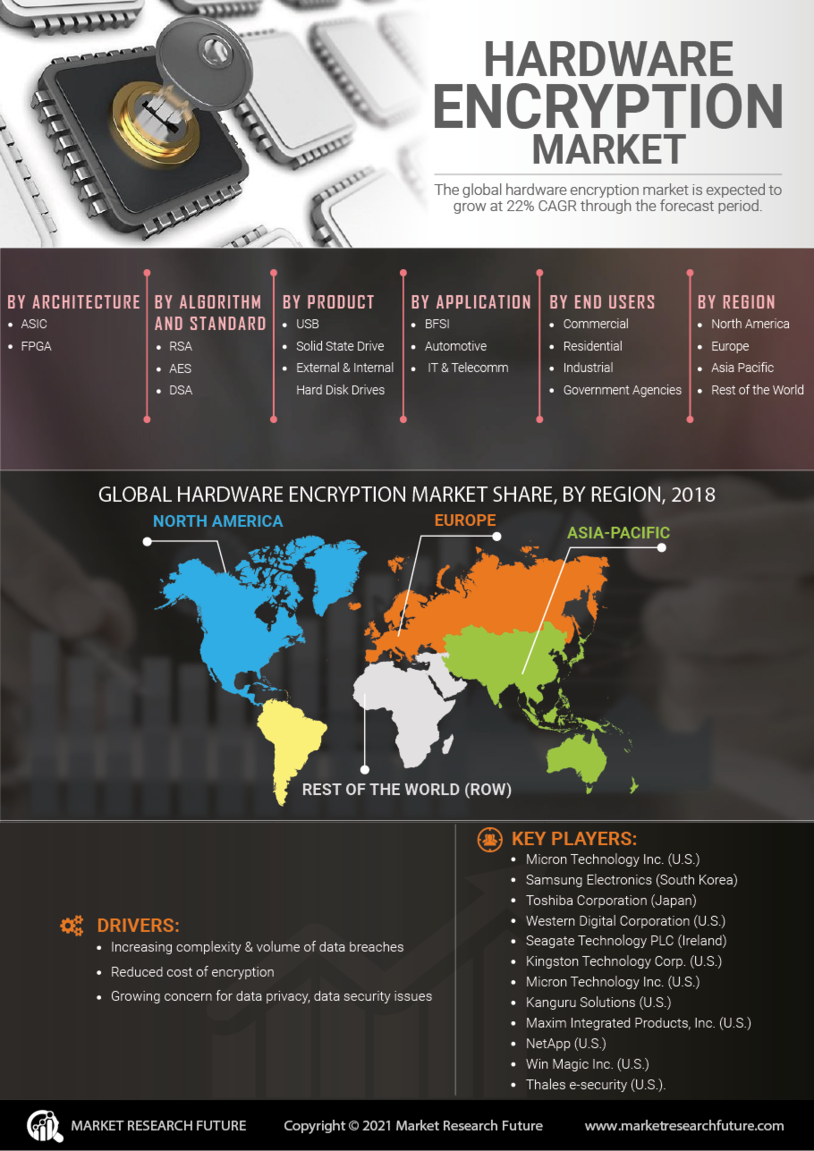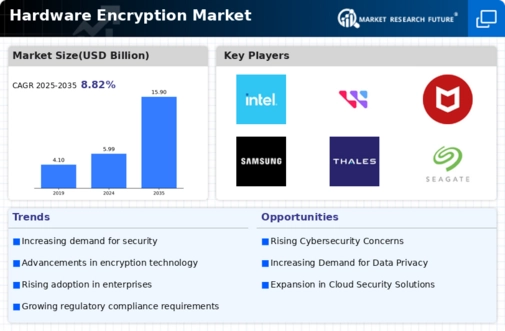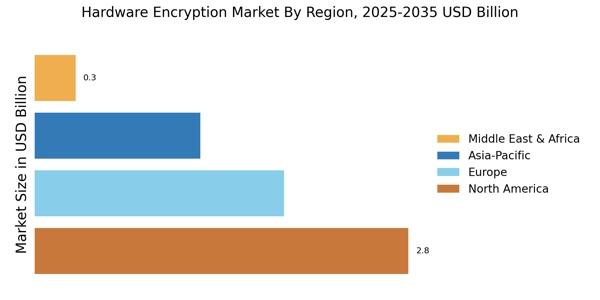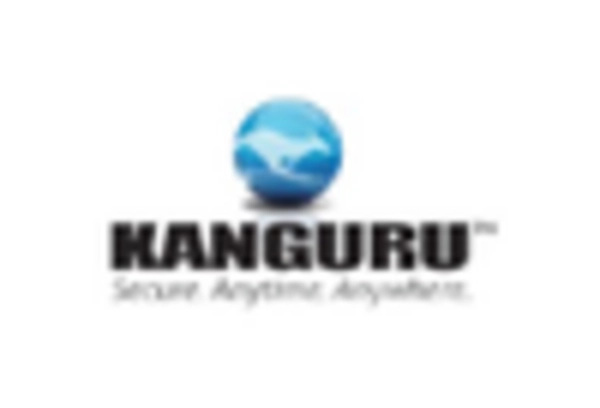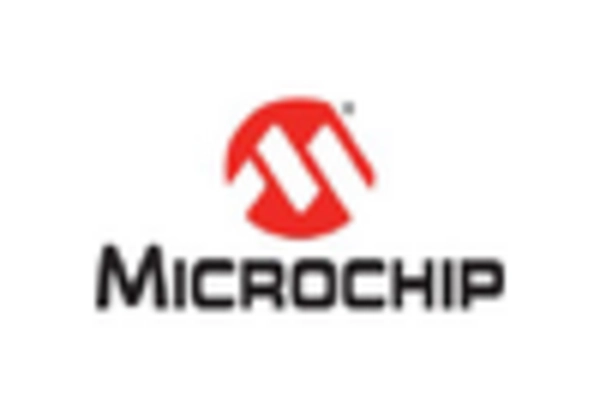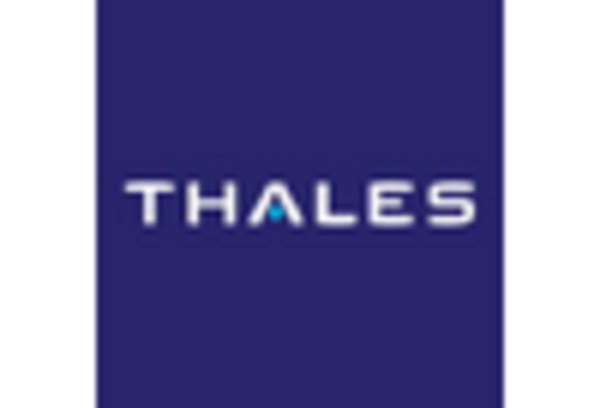Rising Cybersecurity Threats
The Hardware Encryption Market is experiencing a surge in demand due to the increasing frequency and sophistication of cyberattacks. Organizations are compelled to adopt robust encryption solutions to safeguard sensitive data from unauthorized access. In 2025, it is estimated that the global cost of cybercrime will reach trillions of dollars, prompting businesses to invest heavily in hardware encryption technologies. This trend indicates a growing recognition of the importance of data protection, as breaches can lead to severe financial and reputational damage. Consequently, the Hardware Encryption Market is likely to expand as companies prioritize security measures to mitigate risks associated with data breaches.
Growing Adoption of Cloud Services
The Hardware Encryption Market is benefiting from the rising adoption of cloud services, which necessitate enhanced security measures. As more organizations migrate their data to the cloud, the need for hardware encryption solutions becomes paramount to protect sensitive information stored off-site. In 2025, the cloud computing market is expected to reach substantial valuations, driving demand for hardware encryption technologies that ensure data integrity and confidentiality. This trend suggests that as cloud adoption continues to rise, the Hardware Encryption Market will likely see increased investments in encryption solutions to address the security challenges associated with cloud storage.
Regulatory Compliance Requirements
The Hardware Encryption Market is significantly influenced by stringent regulatory frameworks that mandate data protection measures. Regulations such as the General Data Protection Regulation (GDPR) and the Health Insurance Portability and Accountability Act (HIPAA) require organizations to implement encryption to protect sensitive information. As compliance becomes increasingly critical, businesses are investing in hardware encryption solutions to avoid hefty fines and legal repercussions. In 2025, the market for hardware encryption is projected to grow as organizations seek to align their practices with these regulations, ensuring that they meet the necessary standards for data security and privacy.
Increased Awareness of Data Privacy
The Hardware Encryption Market is experiencing growth driven by heightened awareness of data privacy among consumers and businesses alike. As individuals become more conscious of their personal information and its potential misuse, organizations are compelled to adopt stringent data protection measures. This shift in consumer behavior is prompting businesses to invest in hardware encryption solutions to build trust and ensure compliance with privacy expectations. In 2025, the market is likely to expand as organizations recognize the importance of safeguarding customer data, thereby reinforcing the role of hardware encryption in maintaining data privacy and security.
Technological Advancements in Encryption
The Hardware Encryption Market is poised for growth due to ongoing technological advancements in encryption methods. Innovations such as quantum encryption and advanced cryptographic algorithms are enhancing the effectiveness of hardware encryption solutions. These advancements not only improve security but also increase the efficiency of data protection processes. As organizations seek to stay ahead of emerging threats, the demand for cutting-edge hardware encryption technologies is expected to rise. In 2025, the market may witness a shift towards more sophisticated encryption solutions, reflecting the evolving landscape of cybersecurity and the need for robust data protection.
